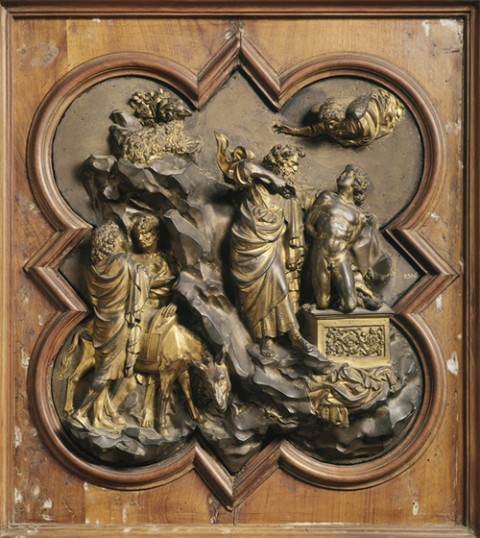Sacrifice of Isaac (Florence baptistery), by Lorenzo Ghiberti (1378–1455)

In 1401, under the patronage of the Arte di Calimala, a competition to decorate the east doors of the baptistery in Florence was announced. Of the seven Tuscan sculptors who entered the competition, the young Lorenzo Ghiberti, barely 20 years of age, emerged the victor. The subject of the doors was the story of the near sacrifice of Isaac (Genesis 22), and the theme was that of divine intervention. In this climactic scene, Abraham is poised to strike a fatal blow with his knife. Isaac is depicted as what some have called “the first truly Renaissance nude”—perfectly proportioned, energetic yet graceful. An angel’s gesture stops the sacrifice, and the viewer notices a ram caught in the thickets in the upper left-hand register. This text has long challenged communities of faith. Some Jewish interpretations, such as the Targum Pseudo-Jonathan, posited that Isaac was 37 years old, and the near sacrifice was an act of faith of not one but two consenting adults, both Isaac and Abraham. Christian interpreters from the patristic period (if not earlier; cf. Hebrews 11:17) had interpreted the story typologically. Melito of Sardis, for example, wrote: “For as a ram he [Christ] was bound . . . And he carried the wood upon his shoulders. And he was led up to be slain like Isaac by his Father. But Christ suffered, whereas Isaac did not suffer” (cf. Frag. 9–11).





